High in the Garhwal Himalayas, about 3 kilometers from the Kedarnath Temple, lies a tranquil and lesser-explored wonder — Chorabari Lake, also known as Gandhi Sarovar. This glacial lake, cradled in the lap of towering snow-clad peaks, is a place where silence speaks louder than words, and nature seems to meditate in its own rhythm. The lake is not just a geographical marvel but also a spiritual and emotional landmark for those who trek to it.
Unlike the bustling Kedarnath temple area, Chorabari Lake offers a quiet refuge, a space where one can simply sit, listen to the whispering winds, and feel the pulse of the Himalayas. It is both raw and sacred, wild yet calming, making it one of the most enchanting places around Kedarnath.
Let’s dive into the story, beauty, and experience of Chorabari Lake Kedarnath in detail.
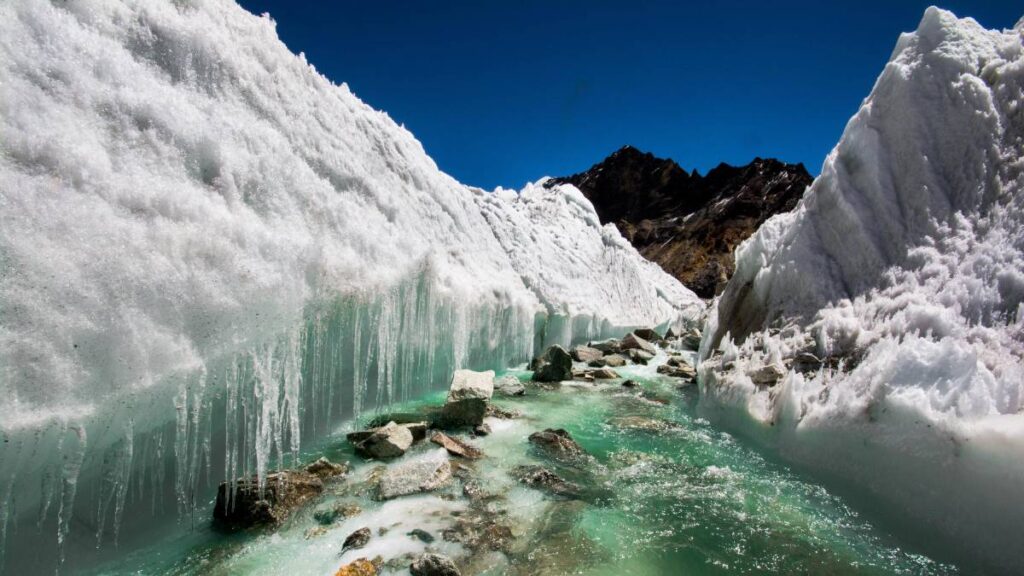
The Location and Setting of Chorabari Lake Kedarnath
Chorabari Lake rests at an altitude of around 3,900 meters (12,800 feet) above sea level. Fed by the Chorabari Glacier, the lake sits against the backdrop of mighty peaks like Kedarnath Dome and Bhartekuntha. It is surrounded by alpine meadows, rocky landscapes, and patches of snow, depending on the season.
The trek from Kedarnath to the lake is relatively short but filled with awe-inspiring scenery. As you walk, the sound of the Mandakini River flowing below and the sight of mountains rising like guardians make the journey as beautiful as the destination itself.
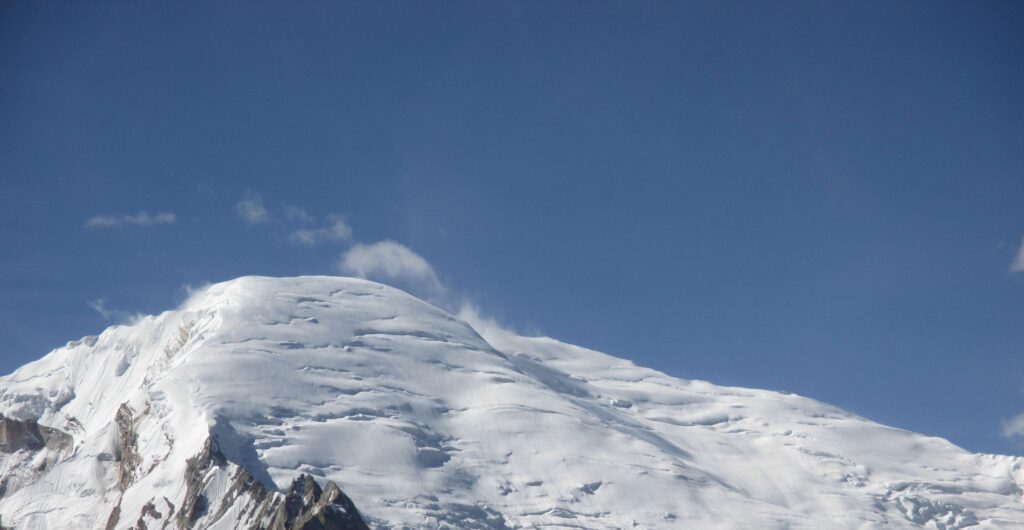
Mythological Connection
Every corner of the Kedarnath region has a mythological link, and Chorabari Lake is no exception. Local beliefs say that the lake was a meditation spot for sages in ancient times. Its serene atmosphere was seen as ideal for deep reflection and spiritual practices.
The name Chorabari is thought to be derived from the surrounding Chorabari Bamak Glacier. Over time, as the stories of this lake spread, it became a sacred stop for pilgrims visiting Kedarnath.

Gandhi Sarovar – The Name of Reverence
Chorabari Lake is also called Gandhi Sarovar because a portion of Mahatma Gandhi’s ashes was immersed here in 1948. This added a modern historical significance to the site. Pilgrims and trekkers often bow their heads at the lake not only for its natural sanctity but also to pay respect to the memory of the Father of the Nation.
The Trek to Chorabari Lake
Starting Point: Kedarnath Temple
The trek begins from the Kedarnath Temple complex. From here, a well-defined trail leads you gradually upwards.
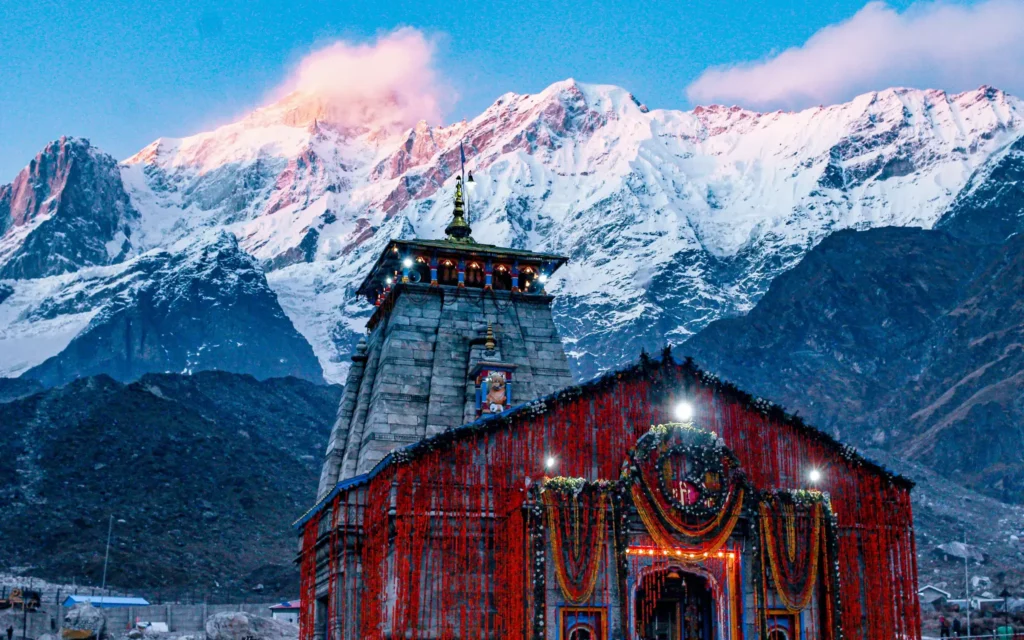
The Journey
- Distance: About 3–4 kilometers one way.
- Time: Roughly 1–2 hours, depending on pace and weather conditions.
- Difficulty: Easy to moderate, making it accessible even to first-time trekkers.
Along the way, you encounter:
- Rugged Pathways – Stony trails that demand careful steps.
- Gushing Streams – Small water channels fed by glacial melt.
- Expansive Views – Clear skies offering glimpses of the Kedarnath range.
The trek is not about speed but about soaking in the silence and grandeur of nature.
Natural Beauty of the Lake
When you arrive at Chorabari Lake, the sight is breathtaking. The water is crystal clear, reflecting the surrounding peaks like a mirror. Depending on the time of day, the lake changes its hues — golden at sunrise, silvery-blue in the afternoon, and a dark, mystical shade as dusk falls.
The charm of the lake is amplified by its setting:
- Snow-capped mountains frame its edges.
- Alpine flowers and grasses bloom during summer, creating splashes of color.
- Migratory birds can sometimes be spotted, adding to the lake’s vibrancy.
During winter, the lake remains frozen, turning into a silent sheet of ice.
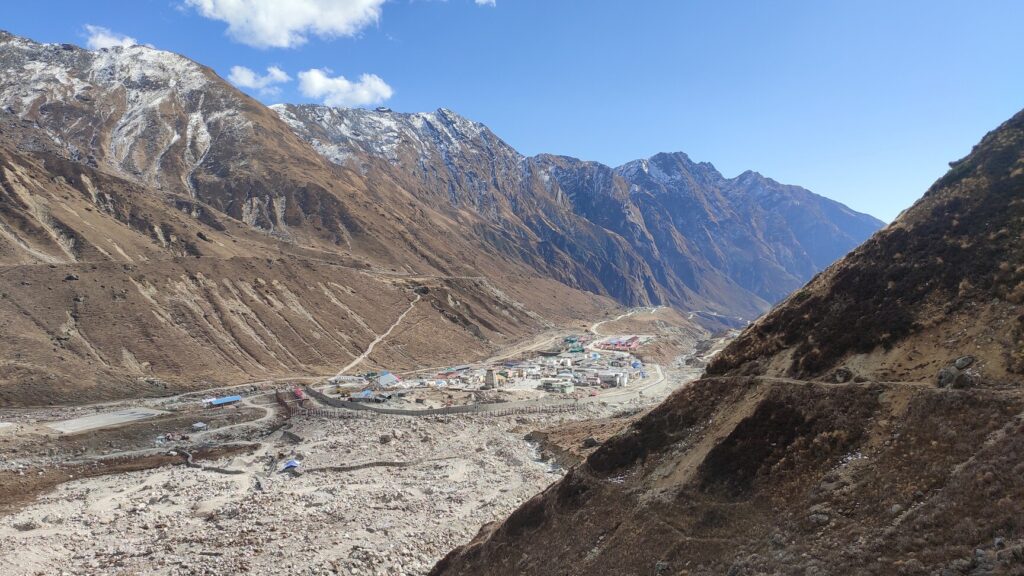
Chorabari Lake and the 2013 Kedarnath Floods
Chorabari Lake is deeply tied to one of the most tragic events in recent Himalayan history. In June 2013, the region experienced unprecedented rainfall and cloudbursts. The moraine that acted as a natural dam for Chorabari Lake gave way, causing a massive outburst flood. The water, along with debris and boulders, surged downstream, devastating Kedarnath town and surrounding areas.
This incident changed the geography of the lake and also deepened its emotional significance. While much of the lake’s earlier charm was lost, it remains a place of reflection, reminding visitors of both the beauty and the fury of nature.
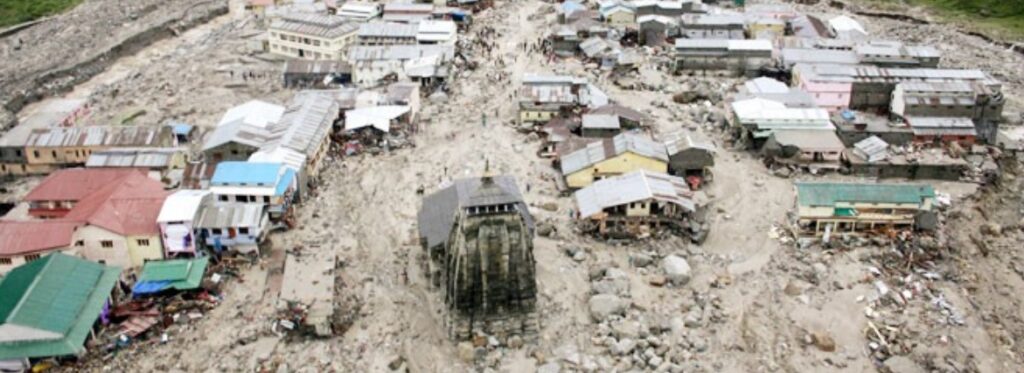
Spiritual Experience at Chorabari Lake
For many, visiting Chorabari Lake feels like entering a natural temple. Unlike the decorated sanctums of built temples, here the sanctity comes from silence, the sound of the wind, and the still water reflecting the sky.
Pilgrims often sit by the lakeside to meditate, chant mantras, or simply immerse themselves in the peace. The lake feels like a threshold between the earthly and the divine, a space where the heart slows down and the soul breathes freely.
Flora and Fauna Around Chorabari
The region around Chorabari Lake is rich in biodiversity, though subtle. Trekkers often spot:
- Rhododendrons blooming in bright red during spring.
- Brahma Kamal, the sacred Himalayan flower, growing in higher altitudes.
- Mosses and lichens clinging to rocks, giving them a greenish tinge.
Wildlife sightings are rare but possible, with species like Himalayan tahr, blue sheep, and various birds occasionally spotted.
Best Time to Visit Chorabari Lake
The ideal time to visit is May to June and September to October.
- In summer, the trails are open, flowers bloom, and the lake is accessible.
- Autumn offers clearer skies, making the reflections on the lake mesmerizing.
Monsoon months (July–August) are unsafe due to landslides and unpredictable weather, while winter leaves the area snowbound and inaccessible.
Tips for Visitors
- Acclimatize First – Spend a day in Kedarnath to adjust to the altitude before trekking to the lake.
- Carry Essentials – Light snacks, water, and a warm jacket, as the weather can change quickly.
- Go Early – Morning treks are safer and offer clearer views.
- Respect the Environment – Do not litter; the lake is fragile and sacred.
- Hire a Local Guide – Especially post-2013 floods, as trails may shift or be unclear.
Why Chorabari Lake is Unique
Unlike other lakes in the Himalayas, Chorabari is unique because it combines:
- Natural Beauty – Clear waters, mountain reflections.
- Spiritual Energy – A place of meditation and calm.
- Historical Memory – Linked with Mahatma Gandhi and the 2013 floods.
It’s not just a tourist attraction but a reminder of the delicate balance between reverence and respect for nature.
Conclusion
Chorabari Lake, though small in size, holds a vast significance. It is a place where mythology, history, spirituality, and natural beauty come together. Whether you see it as Gandhi Sarovar, the meditation site of sages, or a survivor of nature’s fury, the lake leaves a lasting impression on the heart.
For those visiting Kedarnath, a trek to Chorabari Lake is more than an excursion — it is an encounter with silence, resilience, and divinity. Sitting by its shores, watching the peaks mirrored in its waters, one feels humbled and uplifted at the same time.
Chorabari Lake reminds us that the Himalayas are not just mountains; they are living scriptures, telling stories through rivers, rocks, glaciers, and lakes — if only we pause to listen.
FAQs for Chorabari Lake (Gandhi Sarovar)
- Where is Chorabari Lake located?
Chorabari Lake is situated around 3 km from Kedarnath Temple in Uttarakhand. - Why is Chorabari Lake also called Gandhi Sarovar?
The lake is named Gandhi Sarovar because some of Mahatma Gandhi’s ashes were immersed here in 1948. - How far is Chorabari Lake from Kedarnath?
It is about a 3 km trek from Kedarnath Temple, taking roughly 1–1.5 hours. - What is the altitude of Chorabari Lake?
The lake is located at an altitude of around 3,900 meters (12,800 feet). - What makes Chorabari Lake significant?
It is a glacial lake offering pristine waters, scenic reflections of Himalayan peaks, and a peaceful environment. - Is Chorabari Lake open throughout the year?
No, it is usually accessible only during the Kedarnath Temple open season (May–October). - Is the trek to Chorabari Lake difficult?
The trek is moderate and suitable for most pilgrims, though proper shoes and stamina are required due to the altitude. - What can visitors see at Chorabari Lake?
Apart from the lake itself, visitors can enjoy views of snow-clad mountains and the surrounding alpine meadows. - Do pilgrims visit Chorabari Lake after Kedarnath darshan?
Yes, many devotees trek to the lake after visiting Kedarnath Temple as it is considered spiritually uplifting. - Is night stay allowed near Chorabari Lake?
No, overnight stays are not permitted; visitors must return to Kedarnath or nearby accommodations.


